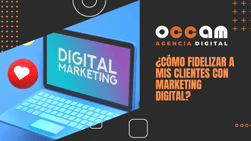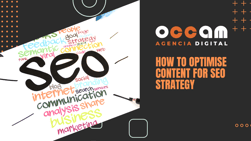Index Content
If you have an online shop in your business model, inbound marketing is a very important technique. Consumer habits are changing every day, but one thing they have in common is that conventional advertising is becoming less and less interesting to them.
Inbound Marketing for ecommerce is a very good alternative for your business. The HubSpot platform itself confirmed this, and says that companies that applied this method have tripled their sales opportunities with an investment of 61% less than usual. This occurs because Inbound Marketing for ecommerce concentrates all its interests in improving the buyer's experience throughout the buying process.
The alliance between the sales and marketing departments of a company is a key tool for developing a good Inbound strategy. The processes carried out by these departments aim to get to know the customer, understand their needs, help them and guide them through their buying journey.
In this post we are going to tell you how Inbound Marketing for ecommerce works and which are the best techniques to apply in your business.
Inbound Marketing for ecommerce
The main objective ofInbound Marketing applied to ecommerce is to attract potential customers, users who really need our products and services. We will create quality content, which has an added value for the user and empathizes with all their needs, so that in this way we can gain their trust. We must generate value to our brand.
If we manage to connect with our audience thanks to Inbound Marketing, we can generate numerous benefits for our company:
- Increase the database and qualified traffic to my website.
- Transform this web traffic into sales.
- Create a specific database for each customer segment.
- Generate a long-term bond with customers that can be transformed into customer loyalty.
- We can analyse and measure our data more accurately.
- Increase the visibility and web positioning of my brand.
- Differentiate myself from my competitors.
- Be a positive reference in my field.
Phases of Inbound Marketing for my Ecommerce
- Attraction
In this first stage of an Inbound Marketing project you must attract users to your website. Channels such as social networks, blogs, content marketing strategies, SEO or advertising are used. The goal is to attract users to my website, where I will delve into their needs.
We must develop a content strategy to offer the best information to users. Quality, attractive, clear and simple information for internet users, which we will distribute through different web channels. A good approach to this Inbound Marketing project can increase web traffic to my ecommerce. We must take into account certain important aspects:
- Knowing our target audience: It is essential to have defined our buyer persona profile, in order to know what their behaviour is, what they need or which social networks they spend more time on.
- SEO strategy: We must apply an SEO strategy to all the content we upload to the network. Positioning my website in the top positions of Google search engines will increase user traffic, and thus the sales of my ecommerce.
- Make my product or service known. We must constantly highlight our products and services, so that the user is clear about what we offer. Answering frequently asked questions or anticipating events is a good way to improve the image of my brand.
- Conversion
The conversion stage is based on the transformation of visitors into potential customers. It is converting an ecommerce visit into a record in our database. This phase is also the stage of capturing and generating leads, where a user of the network can be transformed into a potential customer of my company, which leaves us their information in our database. The following marketing techniques can be put into action:
- CTA or calls to action. We take users to landing pages or landing pages. These pop-up windows are placed at strategic points on the website or our ecommerce. They can be linked through direct links or hypertexts in blogs.
- Landing page: Landing pages provide forms for the user to fill out, giving us information about our potential customer and where they are in the buyer's journey.
- Positive ROI: Surprise our strategy with remarketing to have a good return on investment. Basically it is about offering new offers to users who have already been in the ecommerce and have not completed an action.
- Closing
The main objective at this stage is to get a large number of leads to convert into ecommerce customers. The marketing and sales teams join forces to track leads and determine which are the most likely to become customers of the brand. It is important to segment the database and set a workflow focused on improving the customer experience. Some of the most efficient techniques are the following:
- Email marketing: It is very important to develop an email marketing strategy following the parameters of Inbound.
- Lead nurturing and lead scoring are techniques that are applied to accompany the user throughout the purchase cycle.
- Finally, it is necessary to communicate with the customer when they are ready to make the purchase.
The objective of closing is to prepare potential customers for loyalty.
- Loyalty
It is based on applying a series of marketing strategies and actions to build customer loyalty. It is not an easy task, as we must maintain and take good care of our relationship with the loyal customer. It is to ensure that the consumer becomes a regular customer of my brand and remains in that position. Our marketing strategy for ecommerce cannot be developed without loyalty.
- We must exceed customer expectations.
- Careful and effective communication with our regular customers.
- Be interested in the opinion of our loyal customers.
- Correct mistakes and make constant improvements.
Carrying out an Inbound Marketing strategy for ecommerce is not an easy task, but we must develop an effective and optimal strategy. Offering a good service to the user lays the foundations for a possible second purchase. Our main objective is that the customer returns to buy in my ecommerce, so it is very important to pay special attention to the phases of inbound methodology for my ecommerce.





